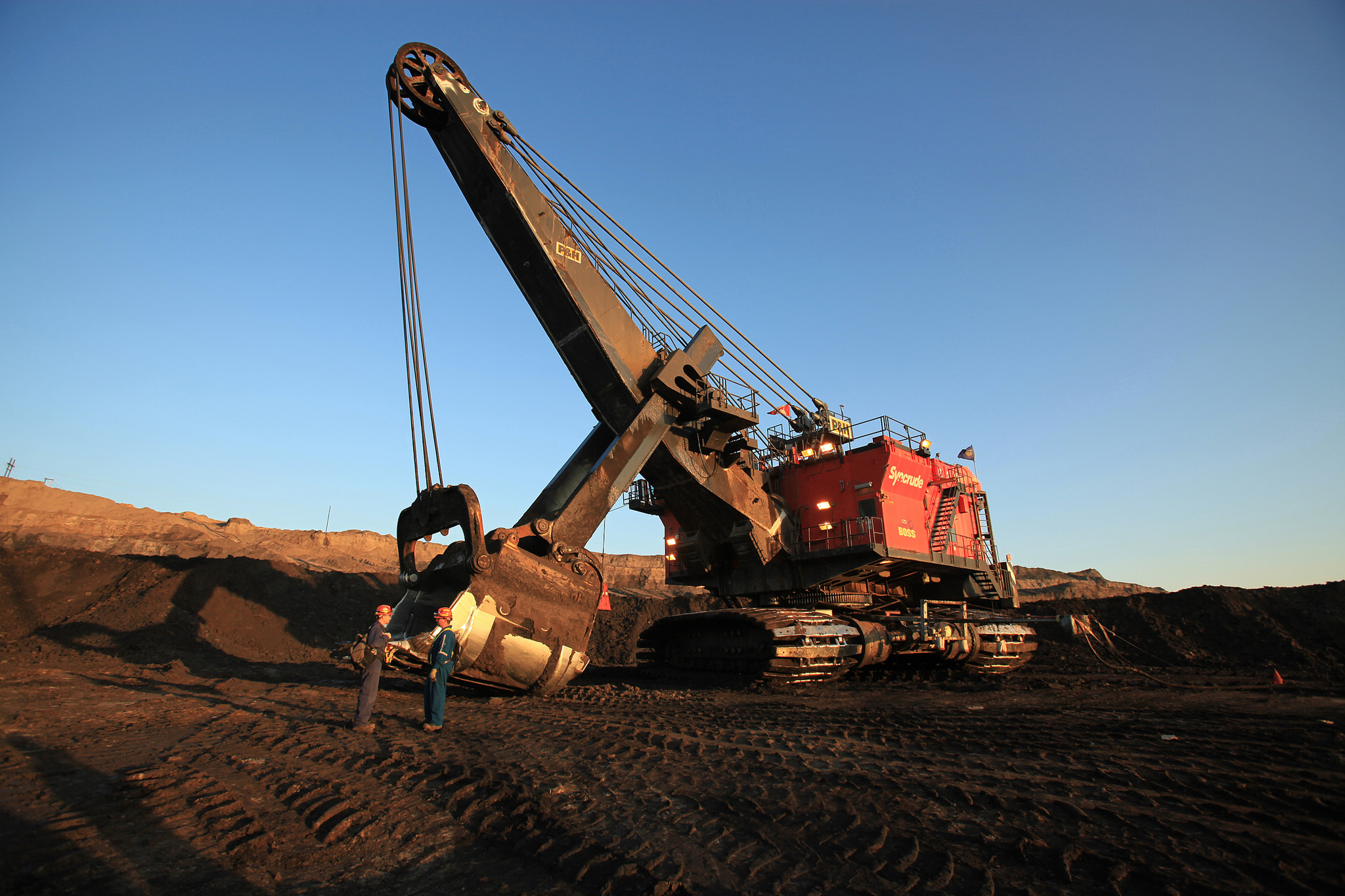Total ASA, France’s largest oil corporation is exiting from Alberta’s oilsands in stages. From now on, Total will focus on low-cost, lower-emissions oil.
Total’s pullback opened a flood. Royal Dutch Shell, and Houston-based Marathon Oil and ConocoPhillips sold off huge oilsands investments last month. Norway’s Statoil left completely, losing a bundle.
Investments in the oilsands have bled red ink since the international oil price crashed in 2014. Seventeen major oilsands projects have been shelved or cancelled. Jeff Rubin, former chief economist for CIBC, writes that next to the Arctic, oilsands oil is the world’s costliest. With the current low international oil price, new oilsands projects couldn’t be funded by any Canadian financial institution.
Should Albertans pray for another boom and promise not to piss it away, or view it positively as the start of phasing out the sands, and phasing in a low-carbon future? It would be good for Albertans, other Canadians and all humanity. Trudeau acknowledged this when he said we can’t shut down the oilsands tomorrow. We need to phase them out. By approving the major expansion of two bitumen-exporting pipelines, and cheering Trump’s approval of the Keystone XL line, Trudeau is not starting down that road soon.
The important question is whether the market will close the oilsands, likely abruptly at some point, or whether the Alberta and federal governments will pro-actively manage the transition to achieve a soft landing for oilsands workers and other Albertans.
A council appointed by former Alberta Conservative premier Ed Stelmach in 2011 warned that oilsands production will almost certainly be displaced in future by lower-cost, lower-emission alternatives. We can wait until then or make strategic investments now to shape the Alberta we want.
Big Oil and big bankers see the writing on the wall, more for investment reasons than to save the planet. Mark Carney, governor of the Bank of England, warns that shifts in climate, policy, and technology pose risks to financial stability from potential drops in the value of oil, natural gas and coal corporations. Their reserves may become stranded or obsolete. Companies need to disclose the carbon emissions of their assets and state how they plan to transition to the future net-zero world.
The Alberta and federal governments refuse to face the carbon-constrained future. Plans to reduce Canada’s carbon footprint include carbon taxes, cap and trade, greener building codes, phasing out coal-generated electric power, and reducing methane emissions. But no one talks about the elephant in Canada’s living room — emissions from producing oil and natural gas.
They are Canada’s largest and fastest-growing source of emissions, especially those in Alberta’s oilsands. Their growth will likely prevent Canada from reaching its modest 2030 climate promises made in Paris. They will certainly kill Canada’s chances of reaching its G8 commitment to cut carbon emissions by 80 per cent below its 1990 level by 2050.
How can you grow your largest source of emissions while significantly cutting emissions overall? You can’t. Yet the pan-Canadian climate plan agreed to by Ottawa, Alberta and seven other provinces endorses the rapid growth of emissions from oil and gas production. They’ve risen more than four-fold since 1990 and now comprise 26 per cent of Canada’s total, ahead of transportation.
Now is the time to start transitioning off the oilsands. It’s much more difficult to stop a boom than to help already displaced workers and communities get off a sunset industry.
Recently, I authored a green paper for the Alberta Institute of Agrologists, titled “Act or be Acted Upon. The Case for Phasing Out Alberta’s Sands.”
The first step is to halt new oilsands projects. Step 2 is to close sands projects that long ago paid off their capital costs. Step 3 is to annually lower the greenhouse-gas ceiling on remaining sands projects until they collectively reach zero by 2040. Starting the phase-out now will spare huge write-downs tomorrow.
Gordon Laxer is the founding director of Parkland Institute at the University of Alberta and author of After the Sands. Energy and Ecological Security for Canadians.
This article originally appeared in the Edmonton Journal.
Image: Flickr/Syncrude Canada
Please chip in to keep stories like these coming.



